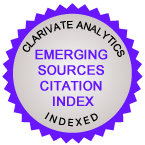The double effect of innovations in the context of international legal combat with human trafficking
DOI:
https://doi.org/10.21638/spbu14.2025.112Аннотация
On the one hand, the new and modern technologies could be subject to abuse by human traffickers, and they use them to improve their illegal activity and to reach the inflow faster and more effectively. On the other hand, the use of modern technologies could help, speed up and advance the combat against this illegal activity and protect potential victims from abuse, and also help in the detection of perpetrators and support prosecution. Our focus in this scientific work is on both positive and negative effects. Concrete examples of both practices are presented on the examples of member states of the United Nations, Organization for Security and Co-operation in Europe and/or Council of Europe. Also, some advices were given — certain tools that help us in the combat against human trafficking were analyzed, bearing in mind that they are already used by civil society as well as private sector and non-governmental organizations but, unfortunately, it is still insufficient to address this massive problem, as evidenced by the statistics. Bearing in mind that this issue is of international importance and that it goes beyond national borders, it is important to approach it from both levels, international and national, in which international cooperation through international law and international legal acts could be extremely important.
Ключевые слова:
international law, combating human trafficking, innovations, positive effects, negative effects, protection of victims, international cooperation
Скачивания
Библиографические ссылки
Загрузки
Опубликован
Как цитировать
Выпуск
Раздел
Лицензия
Статьи журнала «Вестник Санкт-Петербургского университета. Право» находятся в открытом доступе и распространяются в соответствии с условиями Лицензионного Договора с Санкт-Петербургским государственным университетом, который бесплатно предоставляет авторам неограниченное распространение и самостоятельное архивирование.






